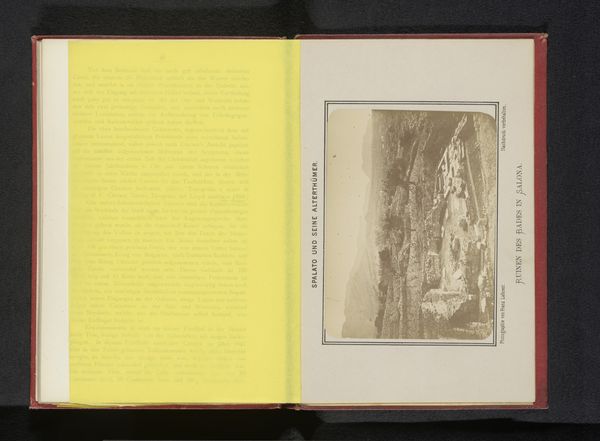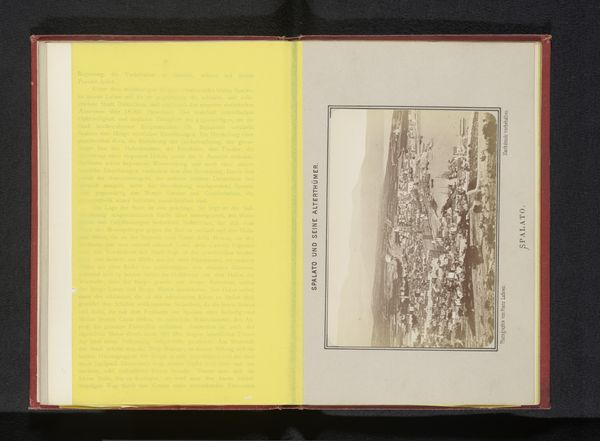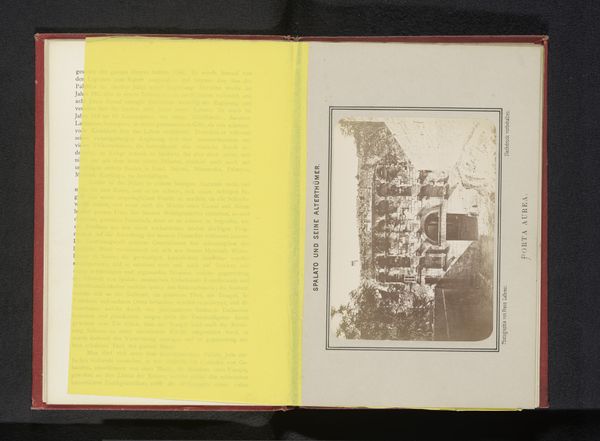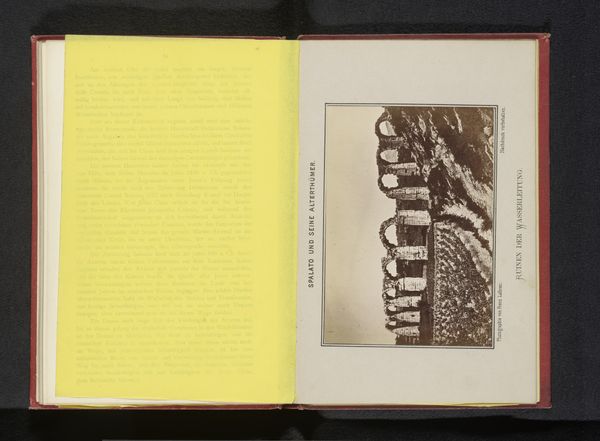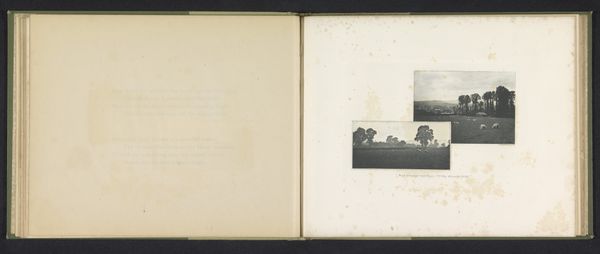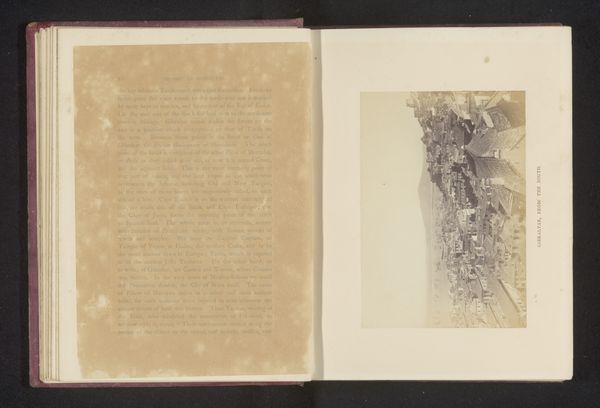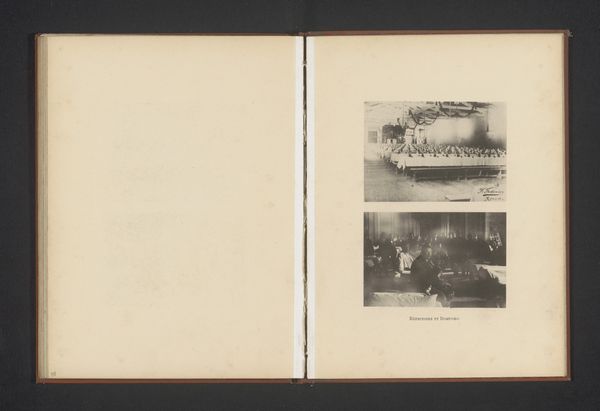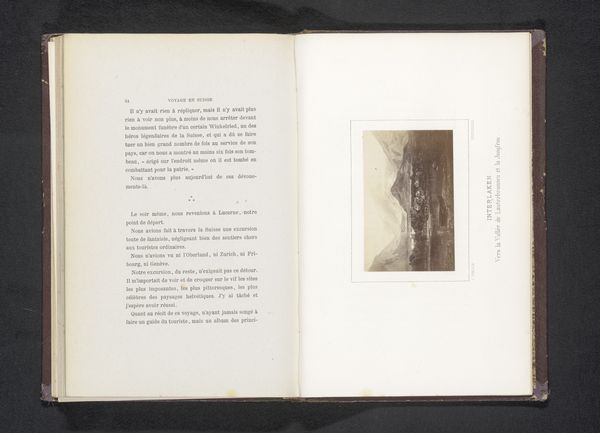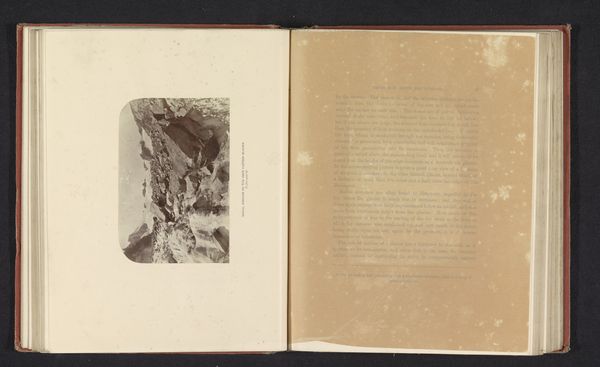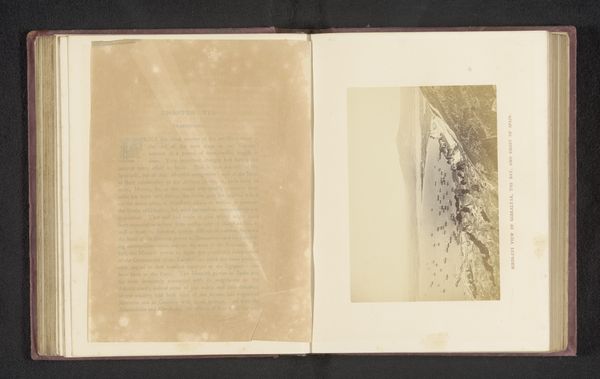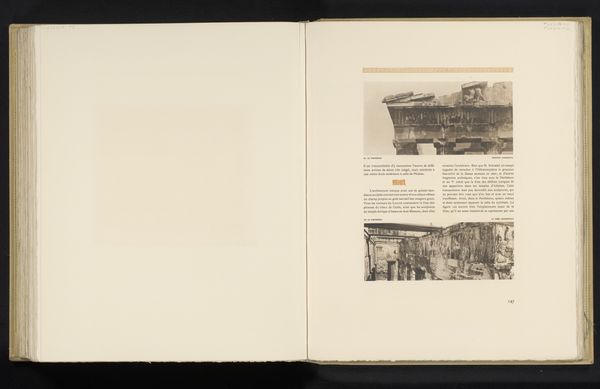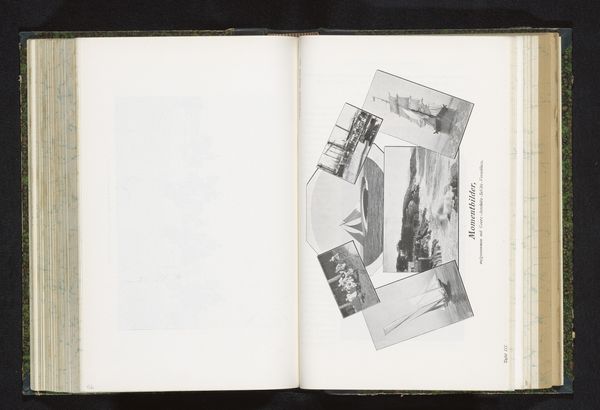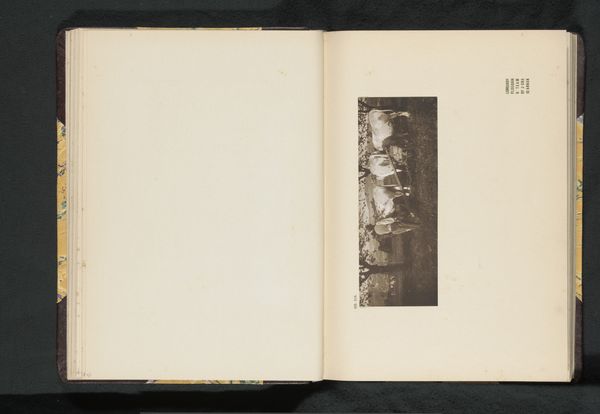
print, photography, albumen-print
# print
#
landscape
#
photography
#
ancient-mediterranean
#
history-painting
#
albumen-print
Dimensions: height 105 mm, width 133 mm
Copyright: Rijks Museum: Open Domain
Curator: This is a page from an album featuring an albumen print photograph by Franz Thiard de Laforest. The image, entitled "Romeinse begraafplaats nabij Split" or "Roman cemetery near Split" dates from before 1878. Editor: It’s such a compelling composition. That pale sepia tone against the bright red binding. The crumbling ruins… I’m immediately drawn in by the stark contrasts and textures. Curator: De Laforest’s work provides a valuable historical document, showcasing a vision of preservation and documentation of the Roman archaeological site near Split. It was shot to inform viewers of Split's transformation over time and for it's rich historical association. It offers a glimpse into how photography shaped archaeological study and its wider accessibility to the public in that period. Editor: Indeed, the technical clarity, the sharp focus used on the architectural structures juxtaposed against the softer mountain background... It's more than just informational; there’s an undeniable artistry to the selection and framing of the view, making a visual statement as much as a historical record. It makes the place feel haunted. Curator: Photography’s inherent realism allowed archaeological finds to be shared with a wide public and created, as in this case, a strong market for artistic documentation as photography allowed archaeologists to present their finds with seemingly scientific accuracy. Editor: That interplay between the formal clarity of the foreground elements – the geometry of the broken architecture – and the blurred, distant landscape certainly speaks to photography’s dual capacity as both objective recorder and interpretive medium. I am caught by that delicate balance between documentation and aesthetic presentation. Curator: Absolutely. It encapsulates how the late 19th century saw both scientific progress and an increased fascination with the past. I see how a photographer, as much as a painter, could make their mark. Editor: Ultimately, it encourages us to think deeply about decay, ruin, and survival through the visual evidence presented before us.
Comments
No comments
Be the first to comment and join the conversation on the ultimate creative platform.
